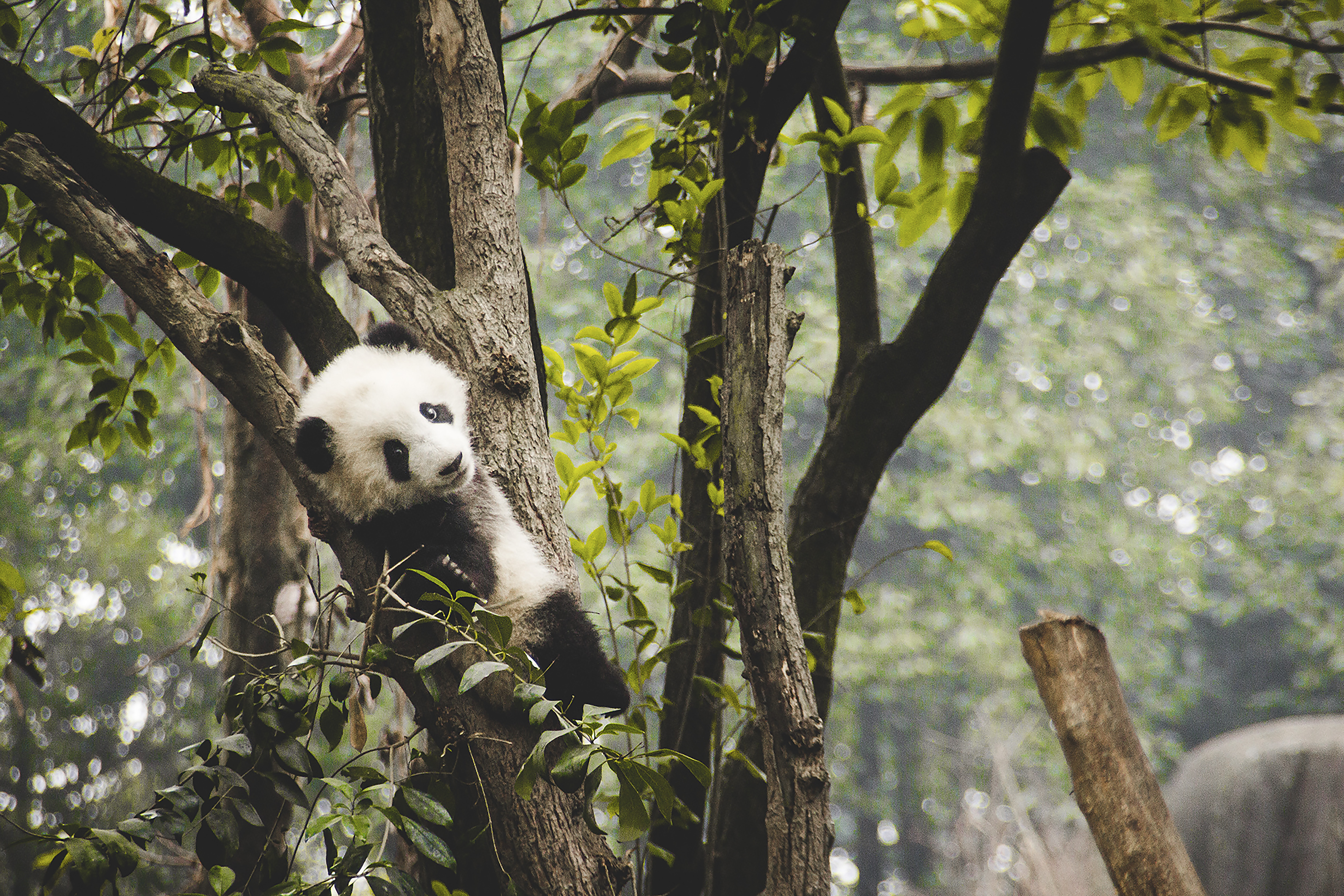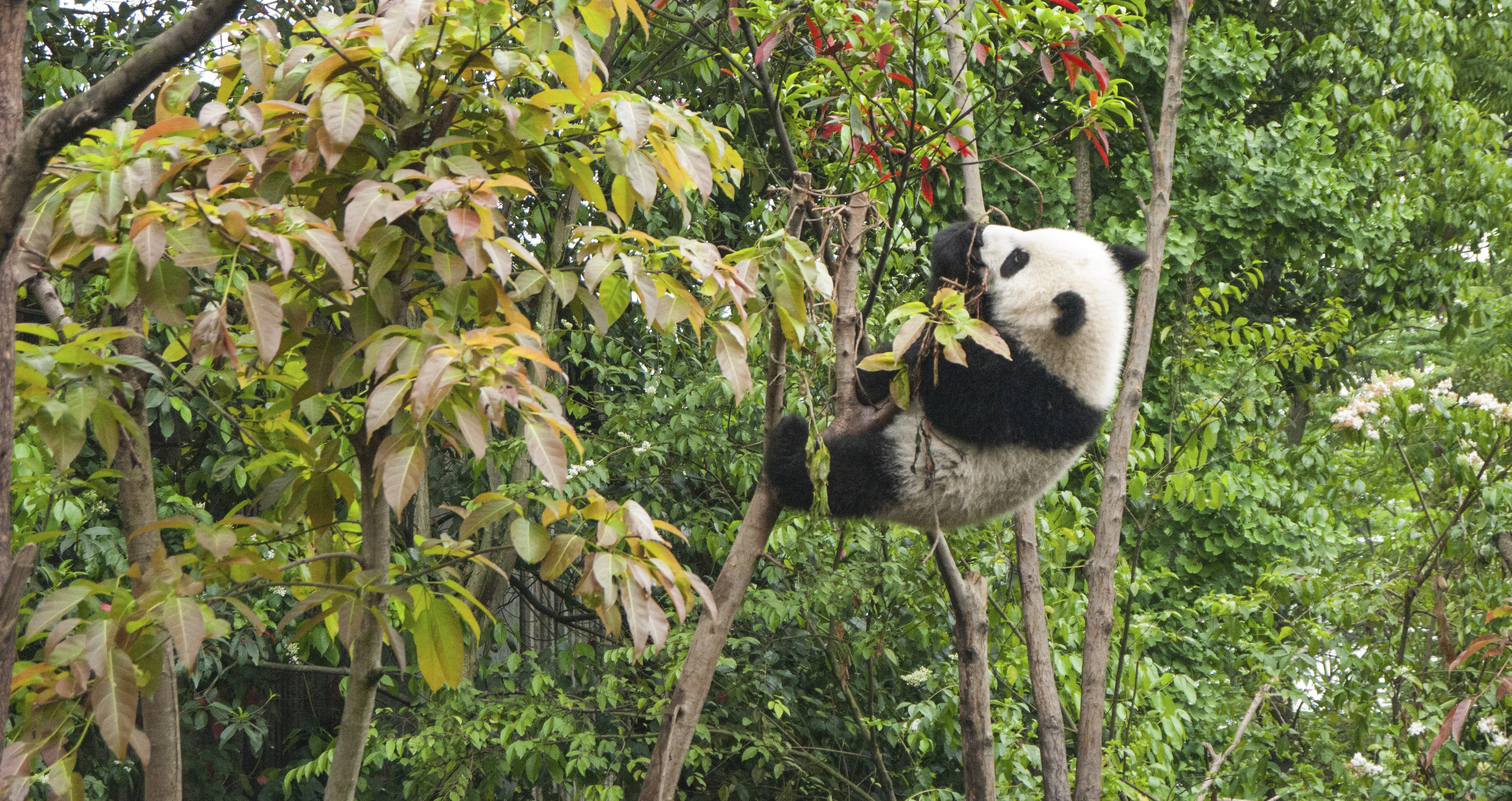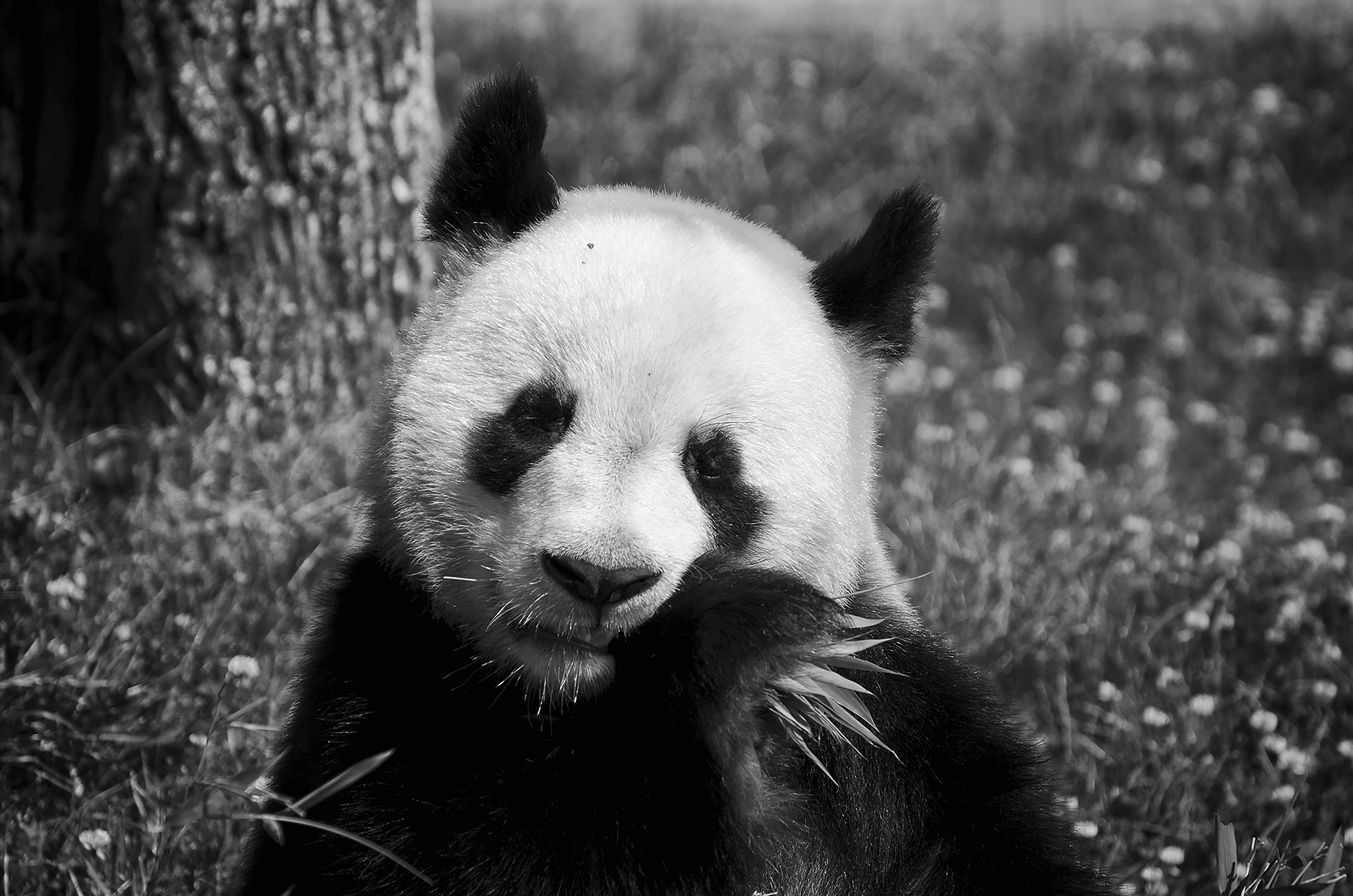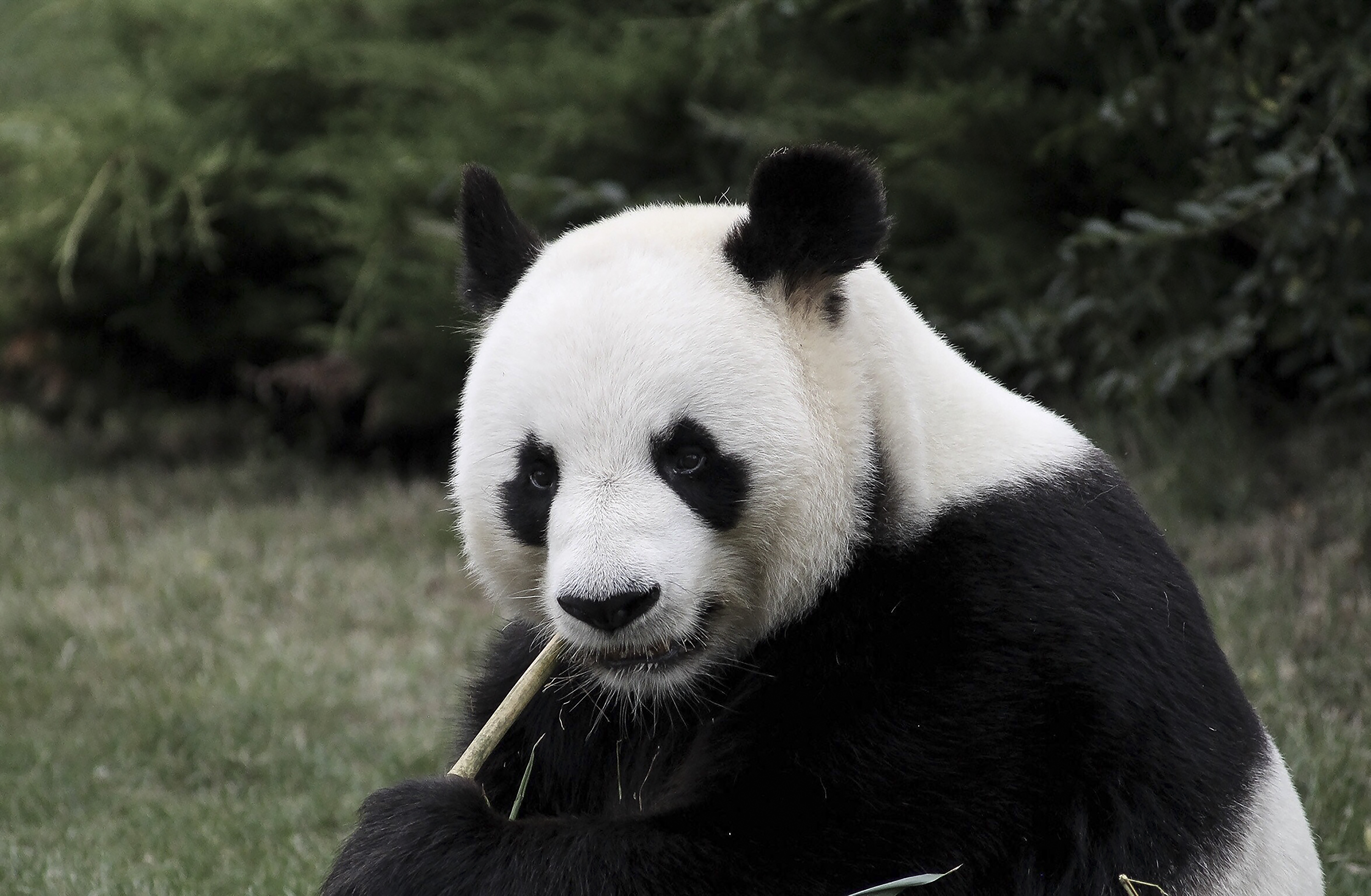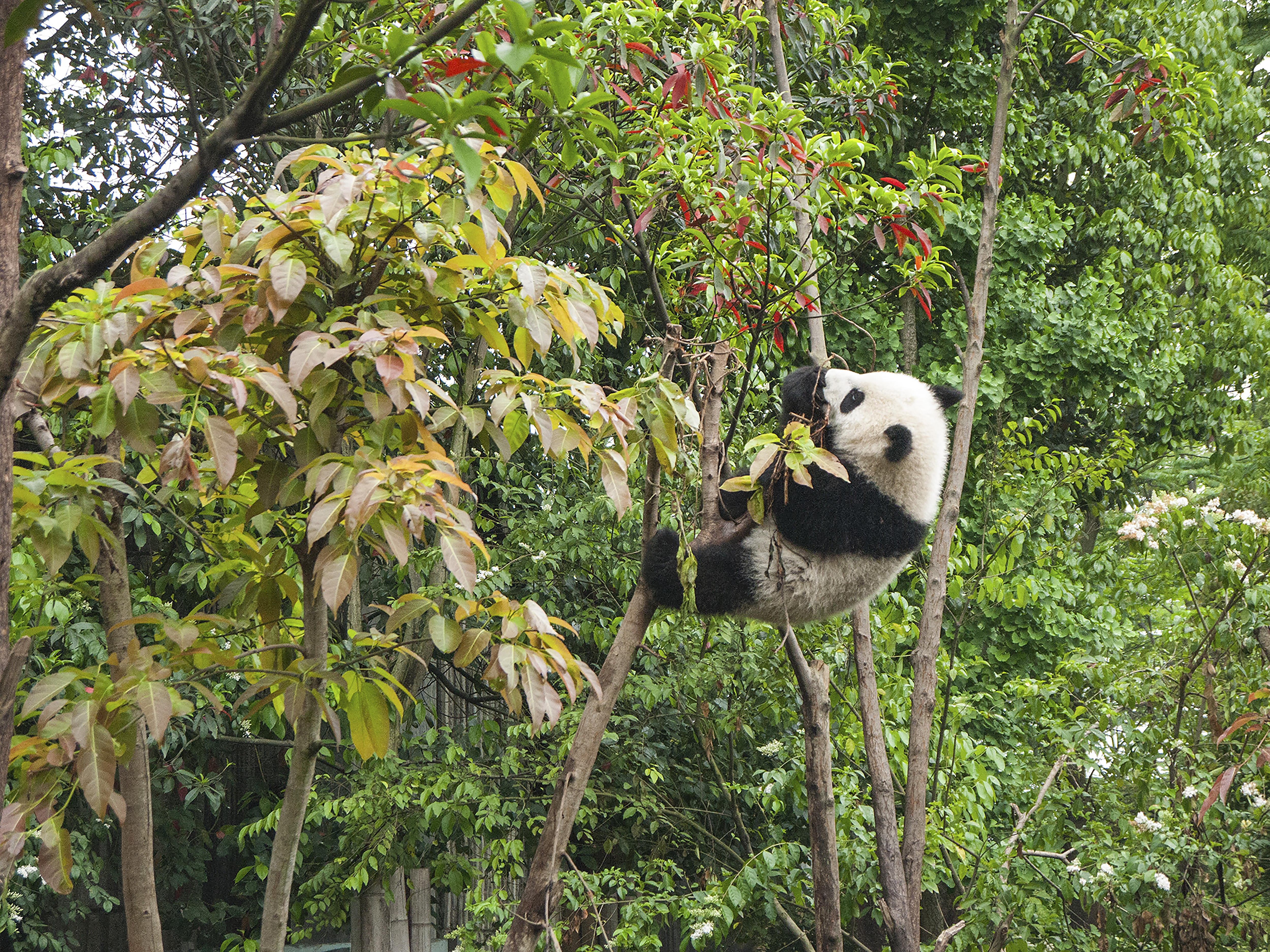Giant Panda
(Ailuropoda melanoleuca)
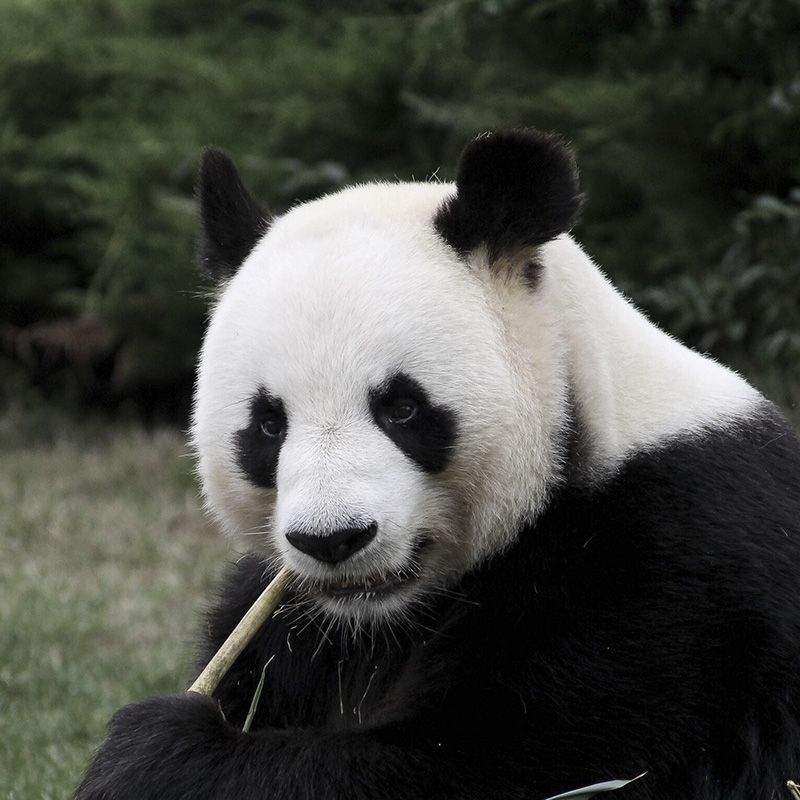
Hengduan Shan Conifer Forests
STATISTICS
Height up to
91 cm
Length up to
1.9 meters
Weight up to
150 kgs
Lifespan
20 Years
Well Camouflaged - Relies on Spacial Memory - Strong Climber
Native to south central China, the Giant Panda is an easily recognized bear with distinctive and luxuriant black-and-white fur and a rotund figure. It is hypothesized that the Giant Panda’s unique colouring is meant to aid in camouflage among its snowy and rocky habitat. Ninety-nine percent of the Giant Panda’s diet consists of bamboo, of which it eats as much as 11 to 38 kgs of each day.
It will occasionally eat other grasses or even meat, being an omnivore, however, these other food sources never surpass its favourite green snack. Due to this low-energy diet, the Giant Panda tends to be sedentary, avoiding social interactions and strenuous exercise. Furthermore, two of its more characteristic features, its large size and round face with powerful jaw muscles, are adaptations to this diet.
Interestingly, the Giant Panda also has a “thumb” and five fingers–the former being a modified enlarged wrist bone, which helps it hold bamboo while eating. Additionally, due to its sheer size, it does not fear predators and can be active any time of the day. Female Giant Pandas ovulate once a year and give birth between 95 – 160 days after mating to one or two cubs, but only one will survive.
BIODIVERSITY BENEFIT
Seed Dispersal
THREATS
Habitat Loss
Due to logging, agriculture and infrastructure.
Harvesting
Panda habitat degraded by bamboo harvesting and harvesting of medicinal plants.
Mass Tourism
Increased tourism in its habitat is causing significant disturbance.
Poaching
Poaching for fur or accidental killing by traps meant for other species.
PROTECT THE WILDARK 100
